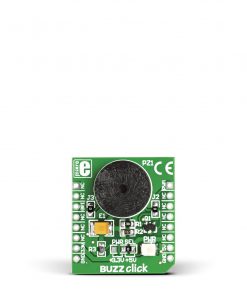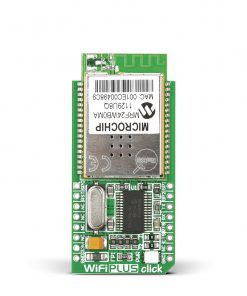ADC 12 Click
R545.00 ex. VAT
ADC 12 Click is a compact add-on board that contains a fully-featured, general-purpose analog-to-digital converter. This board features the ADS7828, a low-power 12-bit data acquisition device that features a serial I2C interface and an 8-channel multiplexer from Texas Instruments. The A/D converter features a sample-and-hold amplifier and an internal, asynchronous clock. The combination of an I2C serial interface, up to eight differential analog inputs, built-in reference with buffered output, and micro-power consumption makes this Click board™ ideal for applications requiring the A/D converter to be close to the input source in remote locations and for applications requiring isolation.
ADC 12 Click is supported by a mikroSDK compliant library, which includes functions that simplify software development. This Click board™ comes as a fully tested product, ready to be used on a system equipped with the mikroBUS™ socket.
Stock: Lead-time applicable.
| 5+ | R517.75 |
| 10+ | R490.50 |
| 15+ | R463.25 |
| 20+ | R445.81 |
























